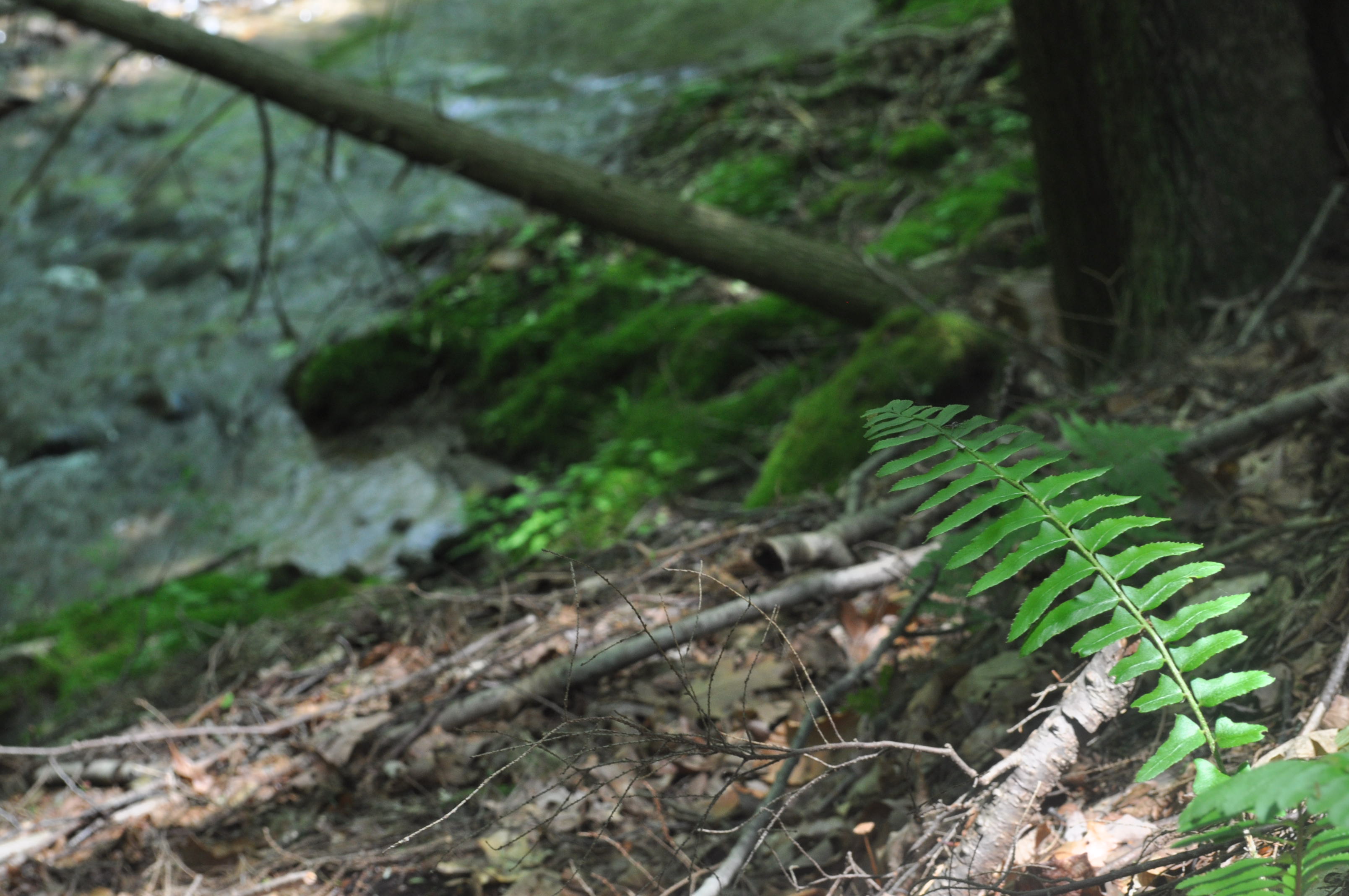
Site 2 of the Shaver’s Creek Long-term Ecological Reflections Project (LTERP) is at the old sawmill site on the east side of Shaver’s Creek, along the Sawmill Trail between Twin Bridges and the intersection with Scare Pond Road. The Rudy family operated the sawmill in the mid-1800s, and now all that remain are rock piles of the original mill foundation and the millrace, or sluiceway, from upstream.
For the next 100 years, writers, artists, musicians, children, students, and community members are invited to reflect on this and the seven other locations designated as part of the LTERP. This collection of reflections will provide an interesting and unique record over the next century so that future generations can better learn the story of this place.
Please enjoy these excerpts from several contributors to the project, and follow the links to read their full Creek Journals.
David Taylor (2013)
The trail to the Rudy Sawmill site is less worn than other trails. Hikers and visitors don’t often walk this far into the forest. The hemlock, pine, poplar forest feels thicker and sunlight less available. You have to look for the trail markers on the trees to get to the sawmill site, and you have to look closely to know when to head toward Shaver’s Creek to see it. The day before, my friend Ian had taken me to the sawmill site and asked, “What looks strange here?”
It’s the same feeling I have when playing Where’s Waldo? I know there’s an anomaly I’m supposed to be seeing. Creek. Check, it’s OK. Pile of rocks. Too close together and stacked back when. Not OK. Forest. It’s young, but most of this forest is, all of it having being cut not more than a century ago. OK. Big groove in the ground arcing toward Shaver’s Creek but no running water or muddiness. It isn’t a tributary. Whoa, not OK. Ian gave me partial credit for seeing the sluiceway and filled in the gaps, so I could see all of “Waldo.” When the sawmill was in use, water was diverted to transport logs. Since no water is diverted now, it’s a dry crease in the land. Hemlocks grow in the middle of the cut, which suggests running water isn’t common.
Ian Marshall, Author/LTERP Founder (2006)
I’ve come here to think about the past and the role of landscape in helping us feel connected to the past. The land doesn’t so much commemorate or preserve the past in the way that, say, castle ruins might. Actually, around here a better example of a ruin that preserves the past would be a charcoal furnace — there’s one by the highway a couple of miles from here.
The truth is, there’s nothing left of the sawmill that was here just a little over a century ago, other than the millrace, and I would not have recognized that as man-made if I weren’t looking for it… The trees here — not a one of them was standing back then. I suppose it’s likely, though, that some of them got their start right about when the sawmill shut down. A few nearby are growing smack dab in the middle of a dried-up portion of the race.
Scott Weidensaul, Author (2006)
The Rudys began populating the land with descendants, opening up the forest — grubbing up the saplings, girdling off the big trees, and planting between their dead trunks. At some point, the settlements grew prosperous enough for farmers to want not just a mud-chinked cabin, but a house of milled lumber. And the Rudys were ready to oblige; by the 1870s, the Barree Township map shows a mill on Shaver’s Creek, and tax records indicate it was owned by George’s grandson, Martin Rudy.
This would not have been a quiet, green-lit forest then, but an open, noisy, dusty place around the mill shed, the air acrid with the smell of sap and sawdust, and the sour, back-of-the-throat bite of fresh-peeled logs; loud with the clank of machinery, the rattle of chains, the whinny of draft horses, the bellowing of oxen. Across the creek stood the Erb homestead; more sunlit fields, the smell of milk cows, wood smoke hanging in the air.
Katie Myers (2007)
What makes the sound of flowing water so comforting? Is it the biological need we have for fresh water? I like to think that it is the sound-blocking quality of the white noise that streams produce. The sound makes us feel that for a little while we can relax in our own safe little bubble, removed from the loud noises and bangs of the world.
Todd Davis (2008)
Snow Fleas
On the bank where mink carve
tunnels, February sun warms, wakes
these bits of pepper that spring up:
furcula folded under abdomen, hooks
released so their small bodies snap
outward above the white walls
of our snowshoes’ trail.
For More Information
For more information on the Long-term Ecological Reflections Project, or to learn how to contribute material, please email Doug Wentzel at djw105@psu.edu.
